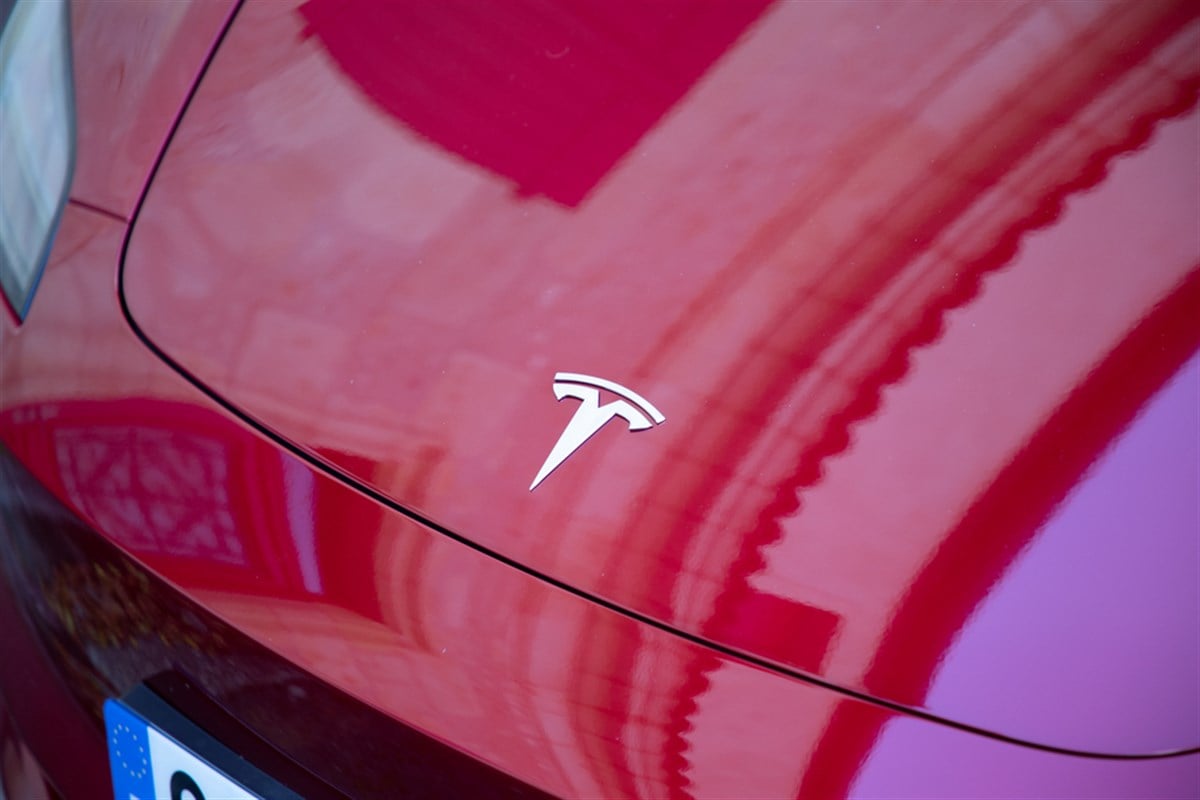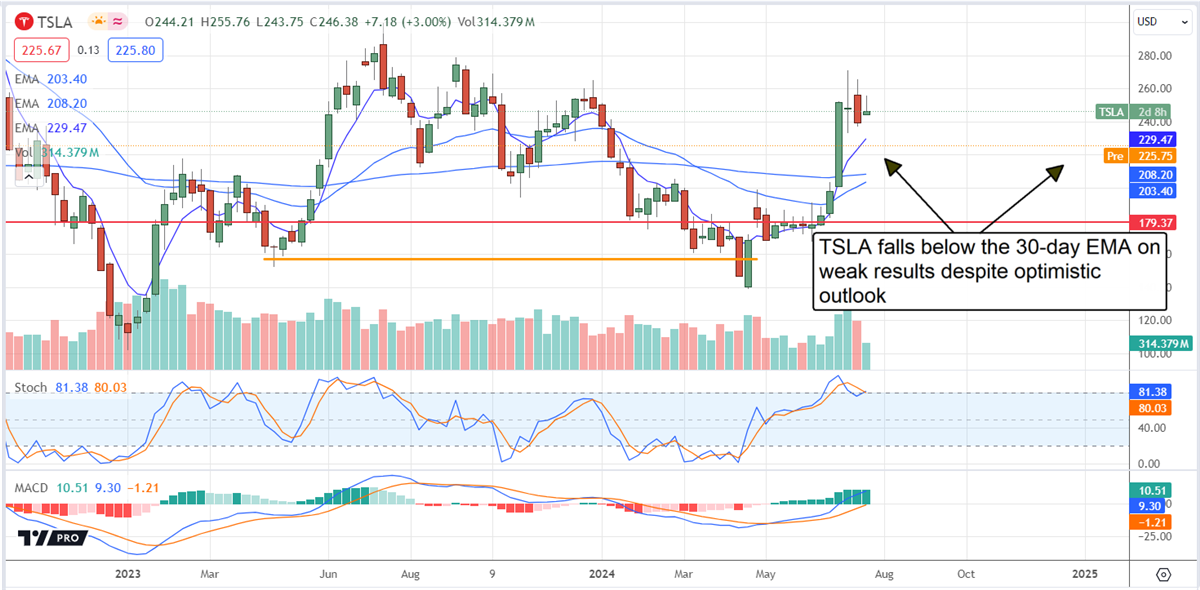
Tesla (NASDAQ: TSLA) did not have a bad quarter per se, but many positives are smoke-and-mirrors hiding near-term pain in favor of long-term hope. The company’s core business, selling EVs, is struggling and shows no signs of improvement. Details from that segment include a 7% decline in revenue on a 5% decline in deliveries that shows the impact of lower pricing.
The worst news from the car segment is that production levels are falling to meet the sluggish demand, down 14% YOY, suggesting that car sales will be equally weak in the next two fiscal quarters. The takeaway for investors is that Tesla is working on its next growth phase. That phase may start as early as next year, but share prices will likely fall back to critical support levels before it happens.
Tesla Grows, But Not the Car Business
Tesla’s Q2 results are great at face value, with revenue growth sustained for a 2nd quarter, outpacing the consensus by $0.76 billion or 300 basis points. However, the growth is due entirely to the energy storage business and regulatory tax credits. The energy business grew by 100% as homeowners and businesses lean into solar power generation and storage; the regulator tax credits income grew more than 20% due to other EV OEMs lagging in their green initiatives. Growth in those segments is good, but tax credits are unsustainable, and power storage is a wee part of sales, roughly 11% in Q2 and insufficient to drive longer-term growth.
The margin news is bad. The company logged margin declines on a GAAP and adjusted basis and at the gross and operating levels to drive significant profit declines. The adjusted net income fell by 40% due to deleverage and increased expenses. Expenses increased by 40%, due primarily to increased CAPEX and AI spending, and will likely remain high for the foreseeable future because AI is central to the company’s next growth phase.
Good news includes double-digit increases in cash flow that will help sustain operations. Free cash flow improved by 34%, leading to a cash-flow positive quarter and balance sheet improvements. The balance sheet highlights include a 33% increase in cash and equivalents, an increase in current and total assets partially offset by increased liabilities, and an 18% increase in shareholder equity, which gives the company the financial standing to continue with long-term plans. Those plans include the Robotaxi, which was pushed out until late next year (if at all, it depends on technological advancement), a cheaper model, which should have been mentioned, and the push to AI.
Analysts Weigh On Tesla Share Price; Headwinds Sap Sentiment
The analysts' response to Tesla’s Q2 results is mixed, including an upgrade and several price target increases, but the net result is bearish. More analysts downgraded or reduced their price targets than not, and many of the positive revisions are tepid and suggest lower prices for the stock. The takeaway is that sentiment is firm at Hold, but the consensus for price action is 20% lower than the pre-release close, suggesting that this stock will return to the low end of its trading range soon. The hope is that Mr. Musk and Tesla can follow through on their plans and deliver results within the next two to three quarters, reinvigorating the market.
The price action in TSLA stock plunged on the news, shedding more than 7% in early premarket trading. The move has the stock price below the 30-day EMA, where bearish day traders may take control. In this scenario, the market for TSLA stock could fall back to critical support near $195 soon; the risk is that price action will fall below the crucial support level on its way back to $150.

